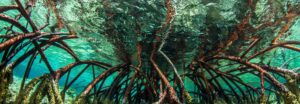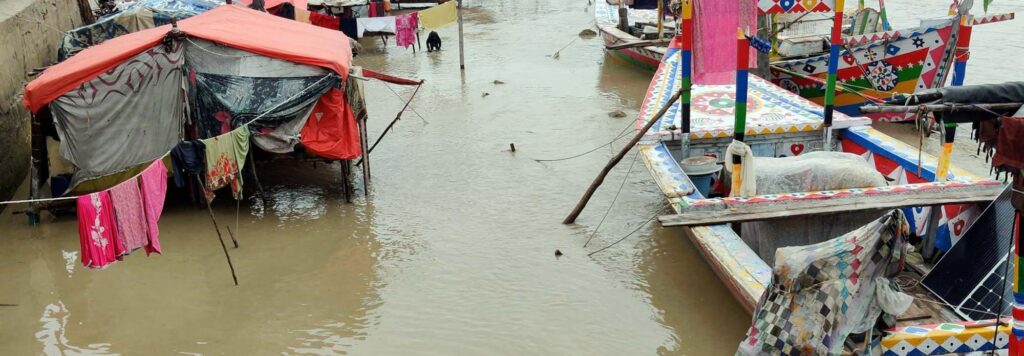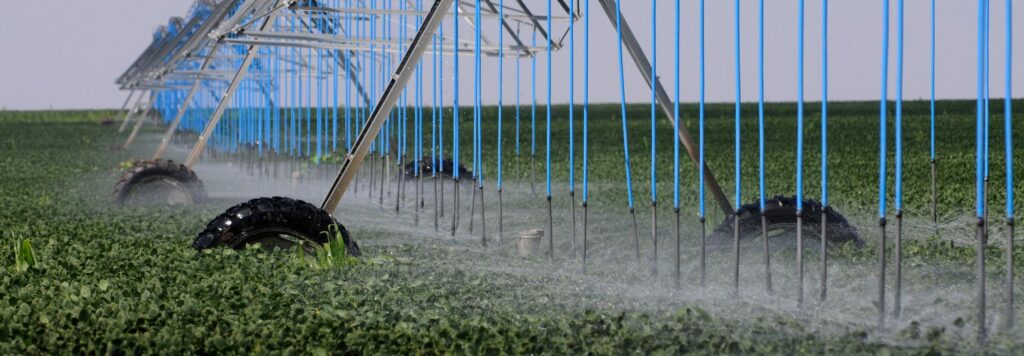Kelp has long been used as a term to describe just over 100 species of large brown algae seaweeds that represent some of the most productive and diverse habitats on Earth.
From providing nursery habitats and foraging grounds for a wide range of marine organisms, to critically contributing to a sense of identity for Indigenous and coastal peoples that have used it for generations as medicine, food and material, kelp is of vital importance to the planet and to people.
Evidence as to the importance of kelp globally is mounting with new research estimating that kelp forests generate approximately $500 billion annually in ecosystem services, such as capturing carbon and removing nutrient pollution such as nitrogen and phosphorous from the water column.
The same research also highlights the importance of kelp forests in providing habitat for valuable fish and seafood species that supports local economies and jobs, all while protecting biodiversity. However, over the last 50 years, climate change, poor water quality and overfishing have damaged 40% to 60% of kelp forests, threatening these ecosystems and the benefits they provide.
Here, using the insights from the new United Nations Environment Programme’s (UNEP) Into the Blue: Securing a Sustainable Future for Kelp Forests report — the most comprehensive knowledge review on kelp published to date — we explore why these critical ecosystems are so important to people, nature and climate.
What Is Kelp?
Kelp is a subgroup of brown seaweed that grows in cold nutrient-rich waters. Commonly described as a foundation species, kelp creates forest-like habitats fostering huge and diverse amounts of life, including sea snails, brittle stars, lobsters, various species of fish, seals, sea otters and more. Seaweed refers to the thousands of red, green and brown species of algae that come in a variety of shapes and sizes which grow in different depths and environments.
An important distinction to make is that seaweed and kelp, perhaps surprisingly, are not plants. Kelp, and seaweed more broadly, are a group of organisms that are largely aquatic and have photosynthetic capabilities, however the two diverged evolutionarily from plants millions of years ago.
Collectively, underwater seaweed forests stretch along the shallow coastal areas of the world, covering an area about the size of the Amazon rainforest.
Kelp species are formed out of three main parts: a blade (or blades) that take in sunlight and nutrients from the surrounding water, a stipe that supports the blade(s) and a holdfast which anchors the organism to the ocean floor. Some seaweed species have gas-filled bladders that allow them to form flexible floating canopies, whereas others extend into the water column or flow along the seafloor.

What Is a Kelp Forest and Where are Kelp Forests Found?
Kelp creates a unique multi-layered forest habitat with a canopy layer at the water’s surface and a connected network of shaded vegetation layers, known as an understory, between the branches of the holdfast on the ocean floor. This varied habitat makes these forests home to a diverse range of animals to live in or use for shelter and food.
Kelp forests are found along 25% to 30% of the world’s coastlines, making them the most extensive marine vegetated ecosystems in the world. They are predominantly cool water species and can be found in temperate, Arctic and sub-Antarctic areas. Some of the largest forests are located along the California and Pacific Northwest coastlines, up to and including Canada and Alaska.
But kelp can also be found at tropical latitudes, such as in the Galapagos Islands and in deep seamounts. Due to the impacts of climate change and increasingly warmer waters, there is likely to be a shift in kelp distribution toward the North and South Poles — something that is already being observed.

Why Is Kelp Important to People and the Planet?
Kelp provides a wide range of vital services to people:
- Biodiversity Hubs
Kelp forests have high levels of biodiversity because it creates three-dimensional structures under the water, which species can use for shelter and food. As dense kelp forests can dampen wave forces, these forests also create calmer microhabitats, allowing for species at different levels within the food chain to inhabit the area. These areas are such hotspots for life that many marine animals will interact with a kelp forest at least once during their lifetime. At the wider seascape scale, extensive kelp canopies offer shelter and foraging sites for marine wildlife such as seals, sea otters, octopuses, sea birds, sharks and large predatory fish. The removal of kelp forests, therefore, has a significant impact on marine life, as found in one study in Norway, where an experimental removal of kelp showed a decline in total fish abundance.
- Food Security
Kelp is a nutritionally rich food source, filled with dietary fiber, omega-3 fatty acids, essential amino acids and vitamins A, B, C and E which can provide health benefits to consumers. It is increasingly being used as an ingredient in salad dressings, puddings, cakes, dairy products and various frozen foods. Kelp also forms the natural habitat for many species harvested by commercial, recreational or subsistence fisheries such as cod, lobster and crab.
- Economic Impact

In addition to food, seaweeds are also harvested for aquaculture feed, bioplastics and other materials. As a versatile resource providing new jobs across the world, kelp farming is projected to continually grow as an industry. Asia is home to more than 99% of global seaweed and kelp production. Respectively, China, Indonesia and South Korea produce 55%, 32% and 8% of the global market, a total of 95%. Kelp forests are also attractive tourist destinations in places like California’s Catalina Island, Channel Islands National Marine Sanctuary and Monterey Bay, because the forests’ high biodiversity levels make the sites great for snorkeling.
- Cultural Impact
The relationship between humans and seaweed dates back millennia. Kelp has many sociocultural values that are represented in paintings, music and art. Historically, kelp plays a role within traditional practices and spiritual and religious life, impacting cultural identities. Kelp has been used as medicine, food and materials for items like fishing line and canoes in South America for 14,000 years and among Aboriginal Australians for perhaps up to 65,000 years. Evidence exists that kelp directly or indirectly influenced people’s migration routes from Asia to the Americas in the late-Pleistocene known as the “kelp highway hypothesis.”
- Coastal Protection

Kelp can act as a natural form of coastal protection when integrated into the coastal infrastructure. Acting as a natural defence system against tidal waves, it can influence the strengths of individual waves. According to one study, kelp forests can reduce wave sizes by up to 60% as they create a protective layer within the water, breaking down the current.
- Alleviation of Ocean Acidification
Kelp can act both as local refugia — where organisms can be protected from otherwise unfavorable conditions — and a mitigating solution to the acidifying effect of carbon dioxide on the ocean. Ocean acidification can have harmful effects on marine organisms like shellfish and coral by preventing them from properly forming the hard shells they need to survive. As kelp perform photosynthesis, they can help tackle this problem by absorbing carbon dioxide and increasing the pH levels of surrounding waters.
- Carbon Storage
Kelp ecosystems take up inorganic carbon (including carbon dioxide) and convert it into organic biomass making it a key component within the carbon cycle. This biomass breaks off and gets transported with ocean currents eventually being eaten, decomposed or sequestered. In the eastern Canadian Arctic, it has been estimated that the total carbon standing stock of extensive kelp forests is the equivalent of the annual greenhouse gas emissions of over 5 million Canadians.
How Can We Conserve Kelp?
Kelp abundance is declining globally by 1.8% annually. Its main threats include ocean warming, grazing, excess nutrients due to land run-off, also known as eutrophication, pollution, sedimentation, overharvesting and the introduction of invasive species and diseases. These stressors often compound, leaving kelp vulnerable to the changing climate.
Most predictions of the future of kelp forests consider a changing ocean temperature as the main driver of reducing kelp coverage. Despite regional variations in the impacts of climate change, kelp species are likely to be impacted all over the world. For example, warmer temperatures can cause damage to kelp even at the cellular level, reducing kelp tissue strength and ultimately decreasing its ability to withstand wave forces.
Furthermore, larger species such as lobster, sea otters and abalone that rely on kelp forests are decreasing in population size due to overfishing and climate change. Without these predators, sea urchin populations are then able to increase their grazing on the kelp, further degrading the health and extent of kelp forests.
In conserving and restoring kelp forests, it will be important to continue community engagement, financial support, standardized monitoring and reporting systems, as well as future-proof restoration efforts that ensure areas won’t return to previous states.
Utilizing ecosystem-based approaches is key to conserving kelp forests. For example, restoration methods and strategies could include controlling herbivore populations like sea urchins, reseeding reefs, planting kelp and improving coastal water quality. Typically, the most successful restoration projects are often those undertaken near existing kelp forests.

International Momentum for Kelp Conservation
Conservation and restoration efforts around kelp can help achieve several larger climate targets from different international agreements and sustainability frameworks. For example, some of the United Nations Sustainable Development Goals, — including No poverty (SDG1), Zero Hunger (SDG 2), Clean Water (SDG 6), Decent Work and Economic Growth (SDG 8), Responsible Consumption and Production (SDG 12) and Climate Action (SDG 13) — can all be addressed through sustainable kelp harvesting and conservation.
Similarly, the High Level Panel for a Sustainable Ocean Economy explicitly mentions kelp and seaweed within the priority actions of its Transformations ocean action agenda for this decade. Recognizing the relevance of kelp conservation and restoration to high-level initiatives such as these forms a critical part of safeguarding them for current and future generations.
The release of the UNEP’s global kelp report comes at a critical time for safeguarding the world’s kelp forests through increased public awareness and institutional support for advancing conservation, sustainable management and restoration efforts. By adding the report’s data to WRI’s interactive Ocean Watch platform, it will help enable a more comprehensive understanding of the land-sea interactions occurring along coastlines.
Now that there’s evidence of the benefits provided by healthy kelp, the threats kelp faces and where it’s most at risk, it’s time to act. Increased political will and financial support can help maintain and enhance the recovery of these marine treasures for the good of people, nature and climate.












